European Memories
of the Gulag
BioGraphy
Eela LÕHMUS
Before moving back to a modest wooden house in the tiny village of Keeni, 66 kilometres from Tartu, Eela Lõhmus, born in 1929, had a life of long, terrible and exciting journeys. Her father was arrested in 1945 in one of the post-War purges. She and her mother, as relatives of an “enemy of the people”, had a hard time for years. They were exiled in 1949 during the major deportations at the end of the purges in the Baltic republics. Without losing her spirit, Eela, and other special resettlers in Siberia, wrote poems in Estonian, and corresponded with friends who had stayed in Estonia. These activities, suspicious in the eyes of the Soviet authorities, were used to bring a case against Eela and she was sentenced for counter-revolutionary activity. She worked mainly logging in the Kolyma camps. She met her husband there and stayed to live in Magadan even after she was released in 1956. But poor health and separation from her husband caused her to return permanently to Estonia in 1964.
The extreme harshness of the various forms of imprisonment Eela underwent – special resettlement, prison, camps – the brutality of the forced labour and then the unstable nature of her move back home to Estonia never broke down her determination and zest for life.
The interview with Eela Lõhmus was conducted in 2010 by Aigi Rahi-Tamm and Juliette Denis.
-
 Eela’s childhood
Eela’s childhood

Eela Lõhmus’s parents’ wedding photograph (Photograph, Anonymous, 1920-1929). Source: Eela Lõhmus's Personal archive.
Media subject to copyright.

Eela Lõhmus, her parents and aunt in the late 1930s (Photograph, Anonymous, circa 1939). Source: Eela Lõhmus's Personal archive.
Media subject to copyright.
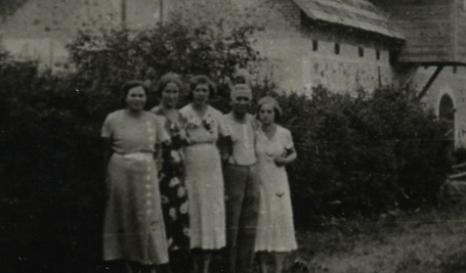
Eela Lõhmus’s parents outside her home in Keeni in Estonia, before the war (Photograph, Anonymous, 1930-1940). Source: Eela Lõhmus's Personal archive.
Media subject to copyright.
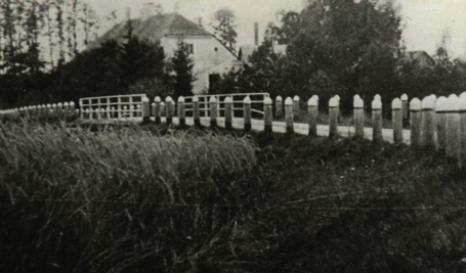
Eela Lõhmus’s home in Keeni in Estonia before the war (Photograph, Anonymous, 1930-1940). Source: Eela Lõhmus's Personal archive.
Media subject to copyright.
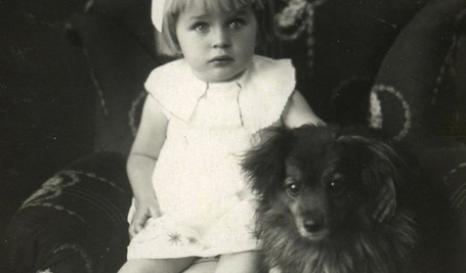
Eela Lõhmus, aged two (Photograph, Anonymous, 1931). Source: Eela Lõhmus's Personal archive.
Media subject to copyright.

Eela Lõhmus and her doll in Keeni in Estonia, before the war (Photograph, Anonymous, 1934-1935). Source: Eela Lõhmus's Personal archive.
Media subject to copyright.

Eela Lõhmus in Keeni in Estonia, before the war (Photograph, Anonymous, 1934-1935). Source: Eela Lõhmus's Personal archive.
Media subject to copyright.
CloseEela’s childhood
Like many deportees, Eela has kept or found photographs of her childhood. She points out her parents, home, activities as games as a girl.
-
 1944 in Estonia
1944 in Estonia

Source: Interview conducted in Estonia by A. Rahi-Tamm & J. Denis, 17/03/2010.
Licence CC BY-NC-ND.
Close1944 in Estonia
In 1944, Eela and her family were caught up in the fighting between the German forces and the Red Army. As they retreated, the Germans advised the local population to evacuate because the Russian soldiers were advancing. Eela and her family and friends fled across rivers and forests under Soviet bombing, between the German tanks.
-
 After Eela’s father’s arrest
After Eela’s father’s arrest

Source: Interview conducted in Estonia by A. Rahi-Tamm & J. Denis, 17/03/2010.
Licence CC BY-NC-ND.
CloseAfter Eela’s father’s arrest
Eela’s father was arrested during the purge in 1945. Following this, Eela was expelled from school and her family had great difficulty in finding a job and earning a living.
-
 The journey to Siberia - The journey
The journey to Siberia - The journey

Source: Interview conducted in Estonia by A. Rahi-Tamm & J. Denis, 17/03/2010.
Licence CC BY-NC-ND.
CloseThe journey to Siberia - The journey
In 1949, Eela and her family were deported. The journey to Siberia was particularly hard. Eela recalls the first night on the train; a baby and an old man in the carriage died.
The fifteen days spent travelling passed with no food and little sanitation.
-
 The journey to Siberia - The first night
The journey to Siberia - The first night

Source: Interview conducted in Estonia by A. Rahi-Tamm & J. Denis, 17/03/2010.
Licence CC BY-NC-ND.
CloseThe journey to Siberia - The first night
In 1949, Eela and her family were deported. The journey to Siberia was particularly hard. Eela recalls the first night on the train; a baby and an old man in the carriage died.
The fifteen days spent travelling passed with no food and little sanitation.
-
 Eela’s arrest
Eela’s arrest

Source: Interview conducted in Estonia by A. Rahi-Tamm & J. Denis, 17/03/2010.
Licence CC BY-NC-ND.
CloseEela’s arrest
While she was in exile in Siberia, Eela was arrested and imprisoned for counter-revolutionary activities. She describes daily life in internment and the interrogations.
-
 Men and women in the camp
Men and women in the camp
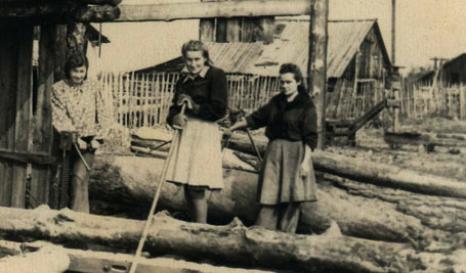
Source: Interview conducted in Estonia by A. Rahi-Tamm & J. Denis, 17/03/2010.
Licence CC BY-NC-ND.
CloseMen and women in the camp
Eela describes the relations between men and women in the camps, before and at the time of their release.
-
 Eela’s friends
Eela’s friends

Source: Interview conducted in Estonia by A. Rahi-Tamm & J. Denis, 17/03/2010.
Licence CC BY-NC-ND.
CloseEela’s friends
Eela made friends with four Russian girls, who got together to sing.
-
 After Stalin’s death
After Stalin’s death

Source: Interview conducted in Estonia by A. Rahi-Tamm & J. Denis, 17/03/2010.
Licence CC BY-NC-ND.
CloseAfter Stalin’s death
Audio available /Eela hears of Stalin’s death in the camp in Kolyma
She describes how, after that date, the numbers sewn on the prisoners’ clothes were removed.
-
 Exile in Siberia, forced labour in Magadan
Exile in Siberia, forced labour in Magadan

Eela Lõhmus’s mother in Siberia, 1950 (Photograph, Anonymous, 1950). Source: Eela Lõhmus's Personal archive.
Media subject to copyright.

A zemlyanka, Eela Lõhmus’s Siberian housing (Photograph, Anonymous, 1950). Source: Eela Lõhmus's Personal archive.
Media subject to copyright.

Eela Lõhmus (right) and her friends engaged in logging work, Magadan (Photograph, Anonymous, 1956). Source: Eela Lõhmus's Personal archive.
Media subject to copyright.

Eela Lõhmus (bottom right) and her fellow prisoners, Magadan (Photograph, Anonymous, 1956). Source: Eela Lõhmus's Personal archive.
Media subject to copyright.

Eela Lõhmus in Magadan, shortly before her release (Photograph, Anonymous, 1956). Source: Eela Lõhmus's Personal archive.
Media subject to copyright.
CloseExile in Siberia, forced labour in Magadan
The special value of Eela Lõhmus’s life story lies in her two-fold experience of the Stalinist purges: first some months in exile in Siberia as a “special resettler”, before being tried and sentenced to forced labour for counter-revolutionary activities. She has kept photographs of these years of deportation and camp life, which show the Siberian landscape and the work in Kolyma. In the Siberian village in 1950 can be seen her mother, particularly affected by this new way of life, and the housing, zemlyanki, half-buried temporary shelters common in the Soviet forests during those days of shortages.
In Magadan, Eela and her fellow deportees, like many prisoners in 1952, had the restricted but real opportunity of taking photographs of each other. The pictures of Eela reflect the world of women’s imprisonment and the harshness of the work the young women did. But they also evoke the strong ties of friendship and solidarity that were formed among the women prisoners.
-
 After release: Estonians in Magadan
After release: Estonians in Magadan

The Estonians in Magadan (Photograph, Anonymous, 1958). Source: Eela Lõhmus's Personal archive.
Media subject to copyright.

The Estonians in Magadan (Photograph, Anonymous, 1958). Source: Eela Lõhmus's Personal archive.
Media subject to copyright.

Eela Lõhmus outside the camp gate after her release (Photograph, Anonymous, 1958). Source: Eela Lõhmus's Personal archive.
Media subject to copyright.

The camp huts, where Eela Lõhmus and her friends lived even after their release (Photograph, Anonymous, circa 1959). Source: Eela Lõhmus's Personal archive.
Media subject to copyright.

Eela Lõhmus and her husband in Magadan (Photograph, Anonymous, 1958). Source: Eela Lõhmus's Personal archive.
Media subject to copyright.

Eela Lõhmus’s husband, Magadan (Photograph, Anonymous, 1958). Source: Eela Lõhmus's Personal archive.
Media subject to copyright.

Eela Lõhmus (Photograph, Anonymous, 1959). Source: Eela Lõhmus's Personal archive.
Media subject to copyright.

Eela Lõhmus (Photograph, Anonymous, 1959). Source: Eela Lõhmus's Personal archive.
Media subject to copyright.

Window of the hut where Eela Lõhmus lived after her release, Magadan (Photograph, Anonymous, 1957). Source: Eela Lõhmus's Personal archive.
Media subject to copyright.

Eela Lõhmus’s spinning-wheel, made by her husband (Photograph, Anonymous, 1957). Source: Eela Lõhmus's Personal archive.
Media subject to copyright.

View of Magadan in summer (Photograph, Anonymous, 1960-1963). Source: Eela Lõhmus's Personal archive.
Media subject to copyright.

Eela Lõhmus in Magadan, after her release, Lenin Prospect, Magadan’s main street (Photograph, Anonymous, 1963). Source: Eela Lõhmus's Personal archive.
Media subject to copyright.

Eela Lõhmus in Magadan, after her release, Lenin Prospect, Magadan’s main street (Photograph, Anonymous, 1963). Source: Eela Lõhmus's Personal archive.
Media subject to copyright.

Eela Lõhmus walking in the countryside, Magadan region (Photograph, Anonymous, 1960). Source: Eela Lõhmus's Personal archive.
Media subject to copyright.

Eela Lõhmus’s husband and his motorbike, June 1963 (Photograph, Anonymous, 1963). Source: Eela Lõhmus's Personal archive.
Media subject to copyright.

The Kolyma environment, winter 1963 (Photograph, Anonymous, 1963). Source: Eela Lõhmus's Personal archive.
Media subject to copyright.

Eela Lõhmus sitting on the roots of a Siberian dwarf pine, summer 1963 (Photograph, Anonymous, 1963). Source: Eela Lõhmus's Personal archive.
Media subject to copyright.

Eela Lõhmus and her husband on an excursion along the coast near Magadan (Photograph, Anonymous, 1963). Source: Eela Lõhmus's Personal archive.
Media subject to copyright.

Cliffs near Magadan (Photograph, Anonymous, 1963). Source: Eela Lõhmus's Personal archive.
Media subject to copyright.

Cliffs near Magadan (Photograph, Anonymous, 1963). Source: Eela Lõhmus's Personal archive.
Media subject to copyright.

A fishing trip with Eela Lõhmus's friends (Photograph, Anonymous, 1960). Source: Eela Lõhmus's Personal archive.
Media subject to copyright.

Fishing with Eela Lõhmus's friends (Photograph, Anonymous, 1960). Source: Eela Lõhmus's Personal archive.
Media subject to copyright.

A fishing trip with Eela Lõhmus's friends (Photograph, Anonymous, 1960). Source: Eela Lõhmus's Personal archive.
Media subject to copyright.

THE CRAB! Back from fishing with Eela Lõhmus's friends (Photograph, Anonymous, 1960). Source: Eela Lõhmus's Personal archive.
Media subject to copyright.
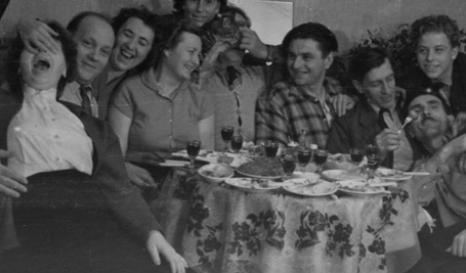
A party with friends: christening the cat (Magadan) (Photograph, Anonymous, 1961). Source: Eela Lõhmus's Personal archive.
Media subject to copyright.

A party with friends: christening the cat (Magadan) (Photograph, Anonymous, 1961). Source: Eela Lõhmus's Personal archive.
Media subject to copyright.
CloseAfter release: Estonians in Magadan
Eela’s release in 1956, like that of many Gulag prisoners, was not followed by an immediate return to her homeland. Because they were legally obliged to remain in exile or had lost all contact with their friends and their past, some former prisoners settled near the camps. Eela, like other Estonian friends, spent some years in Magadan before finally returning to Estonia. This part of her life story is particularly well documented with photographs, fleeting evidence of her happy moments.
Among those who were officially free but whose living conditions were necessarily similar to detention, a little community formed. At first, the released prisoners lived in the same huts as when they were working in the camp. As living conditions became better, they furnished and decorated the rooms and their lives were less arduous. Eela and her husband, who had met in Magadan, did what they could to improve their housing, with window shutters against the cold and burglars, furniture and home-made household equipment.
The couple took advantage of the short warm season in Kolyma to discover nature and the coast. Excursions and fishing trips filled the summer weekends and even in winter there were walks to take. The group of Estonian friends would often gather for entertainment in the evening: any excuse for a party, even christening the cat!



